Results 6,631 to 6,640 of 12094
Thread: Anandtech News
-
01-12-17, 09:02 AM #6631
Anandtech: ASUS Demonstrates ROG Swift PG27UQ: 4K, 144 Hz, HDR, DCI-P3 and G-Sync
ASUS introduced the industry’s first 4K HDR gaming display with a 144 Hz refresh rate using a quantum dot film at CES. The ROG Swift PG27UQ will be a new dream gaming monitor from the company because it features all the modern display technologies and a very fast refresh rate. Since the product is not set to hit the market immediately, ASUS decided to stay quiet about its price and availability timeframe, though expect it to be around $1500-$2000.
The ASUS ROG Swift PG27UQ is based on AU Optronics’ AHVA panel with a 4K (3840×2160) resolution, up to 1000 nits brightness, and a 144 Hz refresh rate with G-Sync. The manufacturer gave the panel a quantum dot treatment via a 3M film in early samples, but as of yet we do not know the exact color gamuts support as these have not been announced yet. ASUS has stated that the panel will offer support for HDR10, which means it might end up offering settings HDR-related color spaces, but at this time it is unconfirmed. Additionally, the monitor is equipped with NVIDIA’s G-Sync HDR variable refresh rate technology for smooth gameplay. Finally, the PG27UQ received a new direct LED backlighting with 384 zones that enables the high brighness and should lend itself to better contrast ratios (this enables localized dimming as a result).
In the recent years, monitors tailored for gamers have gotten increasingly popular because they offered key features important for the target audience: a large diagonal, high PPI, a very high refresh rate and a variable refresh rate technology. Meanwhile, to enable all of the aforementioned, manufacturers had to make certain design tradeoffs when it comes to resolution, brightness and at times even viewing angles due to panel selection, which may have compromised other types of experiences. The new ROG Swift PG27UQ packs everything that ASUS had to offer when it comes to gaming and multimedia, enabling users to have premium experience across the board. The novelty is not absolutely tradeoff-free, though: the display is smaller than the ROG Swift PG348Q.
To take advantage of all the features that the ASUS ROG Swift PG27UQ has to offer, owners will have to use an NVIDIA GeForce GTX 10-series graphics card with a DisplayPort 1.4 connector that supports 4K/144 output (albeit, with DSC) and HDR. NVIDIA’s previous-gen GeForce GTX 9-series GPUs have an HDR-supporting HDMI 2.0a display controller, but the HDMI port on this panel is only good up to 60 Hz at 4K.Specifications of ASUS 4K Ultra-HD G-SYNC Gaming Monitor ASUS ROG Swift PG27UQ Panel 27" IPS/AHVA Resolution 3840 × 2160 Refresh Rate 144 Hz on DP
(via single-cable DP with DSC)
60 Hz on HDMIVariable Refresh Rate NVIDIA G-Sync Response Time Unknown Brightness 1000 cd/m² Contrast Unknown Backlighting Direct LED, 384 zones Quantum Dot Yes HDR HDR10 Support Viewing Angles 178°/178° horizontal/vertical PPI 109 pixels per inch Colors Unknown Color Saturation sRGB
DCI-P3 ?Inputs 2 × DisplayPort 1.4
1 × HDMI
While we do not know when ASUS intends to mass-produce the ROG Swift PG27UQ, it is highly unlikely that this is going to happen shortly for several reasons. Firstly, ASUS and AU Optronics demonstrated the prototype of the panel that powers the display at Computex 2016 and so far, we have not seen any indications that AUO has started mass production of its 4K/144Hz panels. Secondly, contemporary high-end graphics cards barely deliver 60 fps at 4K in games - without sufficient grunt, the monitor will simply not use all of its potential in high-end titles, which could affect demand. On the price side, keep in mind that the Swift PG348Q will remain the flagship ASUS ROG display and therefore the new PG27UQ will unlikely cost more than its bigger curved brother does. We've heard murmurs around the $1500-$2000 price point, but we will see. Given the timescale of a device like this, I suspect we will have more information around Computex time (early June).
Gallery: ASUS Demonstrates ROG Swift PG27UQ: 4K, 144 Hz, HDR, DCI-P3 and G-Sync





Related Stories:
- ASUS ProArt PA32U Display: 4K, 1000 Nits Brightness, 95% DCI-P3, 85% Rec. 2020
- ASUS VA326H and VA326N-W: 31.5-Inch Curved 144 Hz FHD Displays for $399
- AOC Launches the AG352QCX: 35-Inch 200 Hz 2560×1080 Curved Display with Adaptive-Sync
- BenQ Announces the ZOWIE XL2540: 24-Inch 240 Hz Full-HD Display 'for e-Sports'
- Samsung CFG70: Curved 144Hz Displays with Quantum Dot Backlighting and AMD FreeSync
More...
-
01-12-17, 10:30 AM #6632
Anandtech: CES 2017: GIGABYTE’s Thunderbolt 3 to 8x USB 3 Dock
In some ways, Thunderbolt 3 is opening up a new world of connectivity. Having 40 Gbps of bandwidth to play with, along with a number of key mobile devices turning to it as their only source of connectivity, will in some form or another drive the hub and peripheral market beyond what TB1 and TB2 did. That being said, the market is still a bit slow: products are announced, but are region limited or produced in small quantities while the rest of the market develops the functionality to use it. So when we see a good trinket, it can be exciting if it reaches retail.
So enter a GIGABYTE dock that takes Thunderbolt 3 and splits the PCIe lanes between eight USB 3 ports, four using Type-A and four using Type-C. I must confess that I didn’t confirm if these were USB 3.0 ports at 5 Gbps or USB 3.1 at 10 Gbps, which if it was using the latter I would suspect employs a PLX switch and a set of ASMedia ASM1142 controllers to provide the functionality, but would also mean that a user could not pummel the maximum data rate of each port when all were in use. If I were to be cynical, this could just be a single controller and a hub, which would make the unit very disappointing.
At present this unit did not support power passthrough or daisy chaining, however we did suggest both to GIGABYTE as a feature, especially the latter with the ability to daisy chain storage devices. Given that this unit doesn’t require external power, it is at least taking the power required from the TB3 connector. Something like this would go a long way to helping users that rely on a single port out of their device at least. Now admittedly there are a variety of TB3 docks coming to the market offering all sorts of port sets, and these docks typically start at around $150 to get anything more than a couple of USB ports, an Ethernet port and a card reader. We’ll wait and see how GIGABYTE decides to play in this space.
More...
-
01-12-17, 12:10 PM #6633
Anandtech: DEEPCOOL Showcase the GamerStorm Quadstellar: One Big Metal Shuriken Chass
While we haven’t talked much about Deepcool over the years, every show I always ended up scheduling a meeting with them and they always seem receptive to ideas regarding their new chassis designs. The top end products come through the GamerStorm brand, and currently feature the Genome featuring an integrated helix-based reservoir water cooler attached to the front of the chassis, and the Tristellar – a three-pronged mini-ITX chassis designed to wow anyone that sees it. At CES this year, we were shown the next iteration of the Tristellar.
The Quadstellar is the bigger brother, supporting a full-sized extended ATX motherboard along with space for 12 storage drives, pretty much any size power supply you need (280mm), and houses a special segment for three graphics cards connected via PCIe 3.0 cables to the motherboard.
There’s support for five 120mm cooling fans in the design, or up to a 3x120 liquid cooler and a 2x120 liquid cooler as well. The idea here is to support dual GPU systems, such as the ASUS dual LGA2011-3 motherboard, as well as tri-GPU configurations. There’s plenty of room to move for sure, and perhaps the GPU segment is one of the best bits.
I postulated that this would make a good test bed for Ryan, making it easier to switch GPUs in and out of the system. Don’t get me wrong, this chassis is huge – 523 x 485 x 485 mm, and when the system is loaded the front facing fins are going to be designed to open up to allow more airflow.
Currently this is only a prototype – Deepcool told me that the aim is to build a fully aluminium version of the chassis and for it to weigh under 10kg all for around $300. That would be quite impressive, and we discussed the feasibility of adding feet to the bottom of the case in case someone wanted to prop it up vertically.
Despite the perhaps over-the-top look of the chassis, Deepcool is interested in any further suggestions for the design. The goal here is to have something near final at Computex, ready to ship in Q3.
Gallery: DEEPCOOL Showcase the GamerStorm Quadstellar: One Big Metal Shuriken Chassis





More...
-
01-12-17, 03:01 PM #6634
Anandtech: ASUS Announces Designo Curve MX38VQ: 37.5 Inch Curved Display with Qi Char
ASUS has introduced its largest Designo Curve display to date that weds style with a sophisticated feature set. The new MX38VQ uses a UWQHD-class (3840x1600) IPS panel and is equipped with a Qi wireless charging pad, as well as a Harman/Kardon-designed audio sub-system. The product will hit the market in the second half of this year and its price will not be very high for its size and features.
ASUS introduced its first Designo-series display eight or nine years ago in an attempt to address customers looking for an elegant design as well as premium specifications. Today, the lineup includes ten 23” to 34” monitors with eye-catching aesthetics that use high-resolution IPS panels and built-in audio co-designed with brands like Bang & Olufsen or Harman/Kardon. The Designo Curve is a relatively new addition to the Designo family as the first monitor in the sub-series was announced in mid-2016. At CES, ASUS introduced the second curved Designo display that will also be the largest monitor in the company’s stylish lineup and among the largest ultra-wide displays on the market in general.
The ASUS Designo Curve MX38VQ is based on a 37.5” IPS panel with a 3840×1600 resolution, a 24:10 aspect ratio and 2300R curvature. The rather distinctive specs of the panel may point to the fact that it was sourced from LG and we already know what it is capable of. The resolution of the display is well suited for displaying UHD content filmed in an aspect ratio of 2.35:1 or 2.40:1 (a lot of movies are shot in such aspect ratios). Like the smaller curved Designo model, the MX38VQ uses a stereo audio sub-system co-designed with Harman/Kardon that features two 8 W speakers and software enhancements. As for connectivity, the new monitor has DisplayPort and HDMI inputs, just like many contemporary products.
One of the main selling points of the new Designo Curve MX38VQ display is a 5W/1A Qi wireless charging pad in the base. So far, only AOC and Samsung have released monitors with Qi charging commercially (the Designo Curve MX34VQ announced last year is still not available) and there are no large high-end displays with this feature on the market right now. Meanwhile, there are tens of smartphones and tablets with integrated Qi wireless charging (including those from ASUS itself, but also from Samsung, Google, HP, Microsoft and other) and there are accessories that enable the tech on devices without integrated support (e.g., on Apple iPhone 6S).ASUS Designo Curve MX38VQ Panel 37.5" IPS Resolution 3840 × 1600 Refresh Rate 60 Hz Response Time 5 ms gray-to-gray
14 md standardBrightness 300 cd/m² Contrast 1000:1 Viewing Angles 178°/178° horizontal/vertical Color Saturation 100% sRGB
10-bit (8-bit + FRC)Pixel Pitch 0.23 mm Pixel Density 110 ppi Inputs 1 x DisplayPort 1.2
2 x HDMI 2.0Qi Wireless Charging 5W/1A with aurora lighting Audio 8 W × 2
Harmon/KardonLaunch Price $1099
ASUS plans to start selling the Designo Curve MX38VQ in Q3 2017 for $1099, which is considerably lower compared to the current price of the LG38UC99 (~$1600) that allegedly uses the same panel. The monitor is already listed on the company’s global website, which may indicate that the product will be available rather earlier than later.
Related Reading:
- ASUS Demonstrates ROG Swift PG27UQ: 4K, 144 Hz, HDR, DCI-P3 and G-Sync
- ASUS ProArt PA32U Display: 4K, 1000 Nits Brightness, 95% DCI-P3, 85% Rec. 2020
- ASUS VA326H and VA326N-W: 31.5-Inch Curved 144 Hz FHD Displays for $399
- ASUS Starts to Ship Its First Curved Ultra-Wide Display: ROG Swift PG348Q
More...
-
01-12-17, 04:05 PM #6635
Anandtech: Kingston Launches DataTraveler Ultimate GT USB Flash Drive with 2 TB Capac
Kingston this week introduced its new DataTraveler Ultimate GT USB flash drive with a re-freshed design and up to 2 TB capacity. The new devices are designed for those who need to store large collections of multimedia files.
The new Kingston DataTraveler Ultimate GT family of flash drives consists of 1 TB and 2 TB models with a USB 3.0 Type-A connector. The drives come in zinc-alloy metal enclosures to protect from physical damage and are relatively compact for their capacities (at least, more compact than external HDDs or SSDs). The new storage devices feature exactly two times higher capacity than their predecessors, the Kingston DataTraveler HyperX Predator 3.0 (512 GB and 1 TB) drives, introduced four years ago at CES 2013. What is unclear is whether they beat their ancestors in terms of performance (up to 240 MB/s read and 160 MB/s write), but keep in mind that the real-world transfer rate of the USB 3.0 interface is around 400 MB/s at best.
The DataTraveler Ultimate GT USB flash drives will be primarily useful for people who need to carry large amounts of data, but not necessarily edit it. For example, photographers, construction workers or scientists may offload images/videos/documents from their notebooks to such drives just for backup reasons. In fact, keeping in mind that many of such folks may work in harsh environments, the DataTraveler Ultimate GT drives are rated to support extended storage and operating temperature ranges: they can be stored at -40°C and operate at -25°C (-20°C and 0°C for typical USB drives).Kingston DataTraveler Ultimate GT Family of Flash Drives DTUGT/1TB DTUGT/2TB Capacity 1 TB 2 TB Type of NAND Unknown Maximum Transfer Rate 5 Gbps Dimensions 72mm × 26.94mm × 21mm Operating Temperature -25°C to 60°C Storage Temperature -40°C to 85°C Warranty Five Years
Kingston will start to ship the new DataTraveler Ultimate GT USB flash drives in February and the storage devices will be covered with the company’s five-year warranty. The drives will work with any modern Microsoft Windows OS that supports such flash drives (Windows 7 SP1 and later), Apple MacOS (10.9.x and later), Linux (2.6.x and later) as well as Google’s Chrome OS. As for pricing the DataTraveler Ultimate GT USB flash drives are expected to have a price premium given their positioning. For example, the DataTraveler HyperX Predator 1 TB still costs well over $1000 at retailers like Amazon and Newegg.
It will also come with a carry pouch and a USB cable to alleviate issues where it interferes with other ports:
More...
-
01-13-17, 02:16 AM #6636
Anandtech: Nintendo Switch Hardware Launch Details - 32GB w/Expandable Storage, 6.2”
This morning in Tokyo, Nintendo held their long-awaited full product launch briefing for their upcoming console, the Nintendo Switch. Previously unveiled back in October of 2016, Nintendo has been keeping a fairly tight lid on specific details about the console, including its specifications, capabilities, and software lineup. Now with just less than 2 months to go until the console goes on sale, Nintendo is ramping up their promotional campaigns, releasing a good deal of new details on the console, though in a very Nintendo way.
Back when the Switch was unveiled, we learned that the handheld console would be powered by an NVIDIA SoC, NVIDIA’s first console win since 2006. At the time Nintendo and NVIDIA had been very quiet on the specifications of the SoC, and while the full specifications were certain to be off the table, I had been hoping that Nintendo would open up at least a bit more on the SoC. Unfortunately, in admittedly traditional Nintendo fashion, the company has skipped right past anything involving the SoC, and I suspect we’re going to be waiting for the console launch and full teardown before we get any more hard facts here.
For what it is worth, Eurogamer strongly believes that the underlying SoC is a Tegra X1 – NVIDIA’s 20nm Cortex-A57 CPU + Maxwell GPU SoC that’s also used in the NVIDIA SHIELD TV – and while I can’t confirm this at this time, for the moment I don’t have any reason to doubt their suspicions. Tegra X1 is ready and available in volume, and in this respect Nintendo has been conservative for quite some time. Still, it will be interesting to crack open the Switch in March to see if it’s actually Tegra X1 under the hood, or if it’s some sort of Nintendo-specific derivative.
Moving on to new information, while Nintendo held off on SoC information, they have published some new information on the console as a whole. As long suspected, the Switch features a 1280x720p capacitive touch screen LCD. Though lower in resolution than comparable phones and tablets, this is a logical fit for the console giving its performance characteristics, battery life needs, and cost concerns. Nintendo’s website does not specify the type of the underlying panel, though I will be surprised if it’s not IPS or *VA.Handheld Game Console Specification Comparison Nintendo Switch New Nintendo 3DS XL Sony PlayStation Vita Slim SoC CPU 4x ARM Cortex-A57? 4x ARM11 4x ARM Cortex-A9 GPU NVIDIA Maxwell? DMP PICA200 IMG PowerVR SGX 543MP4 Display 6.2-inch 1280x720p LCD Top: 4.9-inch 800x240
Bottom: 4.2-inch 320x2405-inch 960x544
IPS LCDSize N/A 160 x 93.5 x 21.5 mm, 329g 85.1 x 183.6 x 15 mm, 219g Battery 2.5 to 6.5 Hours 3.5 to 7 Hours 4 to 6 Hours Storage 32GB NAND + microSDXC 1GB NAND + microSDHC 1GB NAND or Proprietary Card I/O USB Type-C Proprietary (USB Compatible) Micro-USB Launch Date 03/03/2017 10/14/2014 10/10/2013 Launch Price $299 $199 $199
For storage, the console will feature expandable storage. 32GB (presumably eMMC) is built in to the console, while the console can be further expanded using microSDXC cards, similar to the current-generation 3DS consoles. And as revealed in Nintendo’s teaser video last year, there will also be a separate game card slot for games released on physical media.
Meanwhile Nintendo isn’t being quite as forthcoming on the underlying specifications of the console’s integrated battery, but they are providing some ballpark power figures. The Switch is rated to last between 2.5 and 6.5 hours on a single charge, depending on the game, with the forthcoming Zelda game said to run for 3 hours. This is roughly comparable to the New Nintendo 3DS XL, which is rated for 3.5 to 6 hours, with the Switch having a slightly wider range (ed: though well short of the DS Lite’s 8+ hours). Still, for a long trip it’s clear you’ll need to bring some extra power.
The good news here is that for the Switch, Nintendo is giving up on proprietary chargers and power connectors. The Switch will charge via a standard USB Type-C connection, so it’s possible to use USB power banks with the console. Though without more details on the battery it’s hard to say just how large of a power bank will be required; given the higher power consumption of a gaming console, I expect the Switch will need a larger power bank than similarly sized tablets (perhaps something iPad Pro-sized). The Switch will also come with an AC adapter (curiously, with a hardwired cable), a welcome change after Nintendo didn’t include a power adapter with the New Nintendo 3DS.
As for the Switch’s companion dock, Nintendo has previously confirmed that it would largely be a “dumb” device. That said, today’s unveiling does confirm that it includes a trio of USB 2.0 ports, presumably using the two USB 2.0 channels built-in to the USB Type-C connector. Nintendo hasn’t officially announced any USB peripherals at this time – and it will be interesting to see what does arise, since this is a portable console – though a quick straw poll around here is that we’ll be disappointed if Nintendo doesn’t support the GameCube adapter for the obligatory Super Smash Bros. game.
Otherwise, as far as hardware goes the bulk of Nintendo’s focus with respect to hardware has been on the console’s two detachable controllers, the Joy-Cons. Besides being the console’s primary control mechanism (ed: a tablet with buttons, thank you!), the Joy-Cons are actually a lot more sophisticated than Nintendo originally let on last year. In terms of controls, each Joy-Con features the previously depicted 4 face buttons, a large shoulder button, an analog stick; also confirmed today is that on the inside, rail edge of the Joy-Cons are a pair of smaller shoulder buttons for when a single Joy-Con is used as a controller. So the Joy-Cons are essentially miniature versions of the SNES controller with an analog stick in place of the D-Pad.
It’s what’s under the hood that’s particularly interesting though. As one might expect, Nintendo is sticking with motion controls. Each Joy-Con contains a gyroscope and set of accelerometers, making it roughly equivalent to the Wii remote with Motion Plus.
Beyond that, each Joy-Con features its own special set of features. The right Joy-Con contains an NFC reader/writer for use with Nintendo’s Amiibo figures, and what Nintendo is calling a "IR motion camera,” An IR camera would imply that it’s the same basic functionality as the Wii Remote, which used an IR camera to orient itself relative to the IR LEDs in the console’s sensor bar, however Nintendo also quickly demonstrated that the Joy-Con could measure distance and motion from a human hand facing the camera, something the Wii Remote could not do. Finally, the left Joy-Con contains what Nintendo is calling “HD rumble” functionality, their name for high fidelity rumbling. Given the diminutive size of the Joy-Con, coupled with Nintendo’s examples, I suspect that we’re looking at multiple linear actuators for vibration (similar to Apple’s Taptic Engine), as opposed to traditional motors. Not too surprisingly then, a second set of Joy-Cons won’t come cheap, with Nintendo listing the MSRP at $80.
Finally, taking a brief look at the software side, retailer pre-release information has unveiled that Switch games will go for $60. This is the same price as Wii U games and $20 higher than most 3DS games. The one bit of good news here is that Nintendo has done away with region locking, so it’s possible to buy and play games from any region. Launch day games will include the previously announced Zelda game, and Nintendo’s new mini-game collection, 1-2-Switch.
Wrapping things up, the Switch will be receiving a world-wide release on March 3rd (coincidentally the final day of the 2017 Game Developers Conference). It will be priced at $299 in the United States, with similar regional prices elsewhere across the globe. Ahead of the launch retailers have already put up pre-order pages (and some have started taking pre-orders), including Amazon, Best Buy, and GameStop.
More...
-
01-13-17, 07:53 AM #6637
Anandtech: Marvell Show the 88SS1079 Controller: An Updated 88SS1074
At CES, Marvell announced an updated version of its popular 88SS1074 SATA SSD controller in the 88SS1079. There's no significant change to performance or features as far as we are told, but it moves a few components that were required on the PCB side onto the controller die, saving cost and perhaps to a small extent, power. Fewer components on the PCB will also make layout a bit easier for an M.2 SSD, but the space saved is not so large as to allow for an extra NAND package, We've seen the 88SS1074 on popular SSDs such as the Crucial MX300, SanDisk X400 and WD Blue, and we expect the successors to these drives to adopt the 88SS1079. Some SSD vendors may update their products relatively soon to cut costs as soon as possible and to offset the price impact of the ongoing NAND shortage, but at the very least all current users of the '1074 controller can be expected to use the '1079 when moving to the next generation of 3D NAND that will be hitting the market later this year. This is still a play for cents per GB, so a few cents off the cost of the controller will be helpful, especially for the mid-range SATA SSDs that aim to offer a significant performance boost over DRAM-less designs for a small extra cost.
While we saw a solution using the controller in our meeting with Marvell at CES, we were told to wait for partners to announce their solutions before taking pictures. When we get the 88SS1079 drives in to test, it will be interesting to see if any performance change has occurred (remember, Marvell stated that this should perform the same) or if any power difference to the 88SS1074 is observed due to moving components on die. While no retail SSDs with the new controller have been announced and Marvell cannot comment on their customers' roadmaps, it shouldn't take long for manufacturers to integrate the new controller into their designs given the slight hardware changes and the ability to use existing firmware as-is. We expect new products using the 88SS1079 controller to be announced by the middle of this year.
More...
-
01-13-17, 09:58 AM #6638
Anandtech: OWC Previews DEC Add-On For MacBook Pro
At CES, Mac accessory and upgrade supplier Other World Computing (OWC) showcased prototypes of an upcoming add-on for Apple's latest MacBook Pro models. The OWC DEC is in many ways similar to their existing line of USB and Thunderbolt docks, with one big difference: the DEC is intended to travel around with the computer instead of staying at the desk.
The DEC is OWC's answer to the declining expandability, upgradability and connectivity of the MacBook Pro. The DEC occupies the same footprint as the MacBook Pro and attaches to the bottom by replacing the screws that hold the bottom cover of the MacBook Pro in place. To install the OWC DEC, users will not have to open up their MacBook Pro, only remove Apple's screws and screw the DEC on to the bottom of the machine. The DEC's data connection will be provided by a small bridge connector between one of the MacBook Pro's USB-C connectors and the DEC.
OWC has been working on the idea of the DEC for several years, but the latest generation of the MacBook Pro has made the DEC a priority. The DEC will provide many expansion options that have been removed from the MacBook Pro line over the years, at the expense of making the machine heavier and thicker—but no worse than what the MacBook Pro itself was several years ago. The exact configuration of ports has not been finalized, but at a minimum the DEC will provide USB type A ports, gigabit Ethernet and a SD card reader.
The DEC will also offer internal storage expandability by accommodating 2.5" drives and potentially M.2 SATA SSDs. OWC is also considering a version of the DEC that will use a Thunderbolt 3 connection to the host machine rather than USB, which would make M.2 PCIe storage possible but also make the DEC substantially more expensive.
Gallery: OWC DEC Prototypes




The fit and finish of the prototypes OWC had at CES was poor, but only because the prototypes were very early mock-ups. Despite the obvious tool marks on the bare aluminum and the use of a black plastic covering for the bridge connector, the DEC felt solid and showed attention to detail with recessed sides that don't block the speakers or vents and an overall shape that matches Apple's industrial design.
The first version of the DEC will be available this spring for the 2016 MacBook Pro with Touch Bar, bot 13" and 15" models. OWC is also working on a model that will include an extra battery and deliver power to the host system through the USB-C connection. This model is expected to be available later in the year. Pricing has not been announced, but the base model will almost certainly be more expensive than OWC's existing USB-C docks that retail for about $150.
More...
-
01-13-17, 12:10 PM #6639
Anandtech: Seagate to Shut Down One of Its Largest HDD Assembly Plants
As a part of its cost-cutting efforts, Seagate has decided to shut down its HDD manufacturing plant in Suzhou, China. The factory is one of the company’s largest production assets and its closure will significantly reduce the company’s HDD output. Seagate intends to lay off ~2200 employees, but it is unclear what it intends to do with the facility, which it owns.
The factory in Suzhou, China, assemblies hard drives and performs their final testing before shipping. The plant does not produce HDD subassemblies and thus is not vertically integrated, but at 1.1 million square feet (102 thousand square meters), this is one of Seagate’s largest manufacturing assets and the largest drive assembly facility. The company got the factory from Maxtor, when it acquired it in 2006. According to a media report, the plant no longer makes products and the last employees will be laid off on January 18, 2017.
“As part of our continual optimization of operational efficiencies, Seagate has made the difficult decision to shut down its factory in Suzhou, China,” an alleged statement by Seagate reads. “We regret that our Suzhou employees will be affected by this action, which reflects our ongoing commitment to reduce Seagate’s global manufacturing footprint and better align the business with current and expected demand trends.”
Last year Seagate announced intentions to reduce its manufacturing capacities from around 55-60 million drives per quarter to approximately 35-40 million drives per quarter. In 2016, the company already fired about 8,000 employees from different locations, but that was only a part of the strategy. With the plan to shut down the plant in Suzhou, the company actually reduces its ability to produce the drives.
After Seagate shuts down its plant in Suzhou, China, it will have two vertically integrated HDD production facilities in Wuxi, China, and Korat, Thailand. Both factories product drive subassemblies and actual HDDs, hence, by using only these two plants the company optimizes logistics (as it no longer has to transport drive subassemblies to Suzhou) and cuts its per drive manufacturing costs. Meanwhile, it remains to be seen what happens to Seagate’s factories that only produce drive subassemblies (sliders and HGAs).
It is important to note that while Seagate cuts down HDD assembly capacities, it does nothing to plants that produce heads, media and substrates. Over the past few years, unit shipments of HDDs have declined, but their average capacities increased (especially capacities of HDDs for datacenters) due to strong demand for high-capacity SKUs. Therefore Seagate may not need to produce a lot of drives, but it needs to pack about the same amount of heads and platters into fewer HDDs. Moreover, in the coming years, the company will need more heads because of new manufacturing technologies (TDMR, HAMR, etc.) and more media because it can now pack more platters into high-end helium-filled drives.Seagate's Manufacturing, Development, Marketing and Administrative Facilities Location Primary Use Approximate Area Ownership USA California Product Development
Marketing
Administrative842,000 ft² Owned/Leased Colorado Product Development 664,000 ft² Minnesota Product Development
Production of Recording Heads1,144,000 ft² Northern Ireland Springtown Production of Recording Heads 479,000 ft² Owned China Suzhou Production of Drives 1,103,000 ft² Wuxi Production of Drives and Drive Subassemblies (Head Stack Assembly) 704,000 ft² Leased Malaysia Johor Production of Substrates 631,000 ft² Owned Penang Production of Drive Subassemblies
(Sliders)402,000 ft² Seremban Production of Test Equipment and Systems 299,000 ft² Owned/Leased Singapore Woodlands Production of Media 1,504,000 ft² Science Park Product Development 410,000 ft² Ang Mo Kio Marketing
Administrative225,000 ft² Leased Thailand Korat Production of Drives and Drive Subassemblies
(Sliders, Heads Gimbal Assembly, Head Stack Assembly)1,767,000 ft² Owned/Leased Teparuk Production of Drive Subassemblies
(Heads Gimbal Assembly)362,000 ft² Korea Suwon Product Development 220,000 ft² Owned
What remains to be seen is what Seagate plans to do with its manufacturing assets from the Suzhou facility. The fab is so large that it does not seem that all of its equipment could be relocated to other facilities. Moreover, the building itself is huge and it is unclear what will happen to it.
Related Reading:
- Seagate to Lay Off Over 8,000 to Lower Costs
- Seagate Revives Maxtor Brand for External Storage
- The Evolution of HDDs in the Near Future: Speaking with Seagate CTO, Mark Re
Sources: Seagate, BestChinaNews, Reuters, The Register.
More...
-
01-13-17, 04:33 PM #6640
Anandtech: Digital Storm BOLT X: A Kaby Lake-Based SFF PC with Custom Liquid Cooling
At CES this year, Digital Storm introduced its new compact PC design that weds a small form-factor with a specially-designed liquid cooling system. The BOLT X is designed to enable a significant overclocking potential of components even in a space-constrained form-factor, and it should benefit those who need to have maximum performance in a minimum footprint.
Over the past few years we have observed the culmination of several separate trends: compact computers with liquid cooling, with style and with serious overclocking capabilities. The new BOLT X from Digital Storm is the company’s next-generation SFF PC with a HydroLux LCS that features a number of upgrades aimed to advance its cooling performance as well as improve the system in general. First off, the BOLT X has two 140-mm top mounted fans (up from two 120-mm fans in case of the BOLT 3, the predecessor). Second, it comes with an integrated stand that helps to minimize the amount of dust it sucks in through openings for cool air on the bottom. Third, it features a simplified open layout to make it easier to upgrade and service the PC.
Just like the predecessors, the Digital Storm BOLT X can accommodate a Mini-ITX motherboard and one graphics card located beneath the mainboard to ensure proper cooling and compatibility with custom cards that have tall PCBs. With the BOLT X, Digital Storm will offer the Intel Z270-based platforms (so, they will support technologies like NVMe, Thunderbolt 3, USB 3.1 Gen 2, 802.11 ac Wi-Fi, etc.) along with various Intel Core processors powered by the Kaby Lake microarchitecture. As for GPUs, expect the PC maker to offer the latest graphics cards that will be available with its BOLT X — NVIDIA’s GeForce GTX 10-series for now and whatever comes up next.
At present, Digital Storm does not discuss the exact number of SSDs/HDDs that can be housed by the BOLT X chassis, but the PC will definitely support one high-performance M.2 SSD with a PCIe 3.0 x4 interface on the motherboard as well as a number of storage devices in a 2.5-inch form-factor. Following the latest trends, the boutique PC maker eliminated the ODD from the chassis completely, resulting in a perfectly flat front surface.
One of the intrigues of the new BOLT X system is its PSU. In theory, Digital Storm can install almost any SFX power supply inside (except, perhaps, the SFX-L versions) to improve overclocking potential and/or support power hungry components. However, with the BOLT 3 the company only offers 400 W PSUs.
Digital Storm will start selling BOLT X systems in the first quarter. Exact pricing will depend on actual configuration and will thus vary. At present, the company offers BOLT 3 systems starting at $1906, so the new versions are likely to start at approximately the same price-point.
Gallery: Digital Storm BOLT X: Kaby Lake-Based SFF PC with Liquid Cooling





Related Reading:
- Corsair’s Bulldog 2.0 Gets Kaby Lake-Compatible Z270 Motherboard, New Cooler
- GIGABYTE's New Console: The 'Gaming GT' PC Launched with Core i7-K, GTX 1080, TB3
- Calyos NSG Cube: Passively Cooled SFF PC with Intel Core and GeForce GTX 1060
More...
Thread Information
Users Browsing this Thread
There are currently 16 users browsing this thread. (0 members and 16 guests)




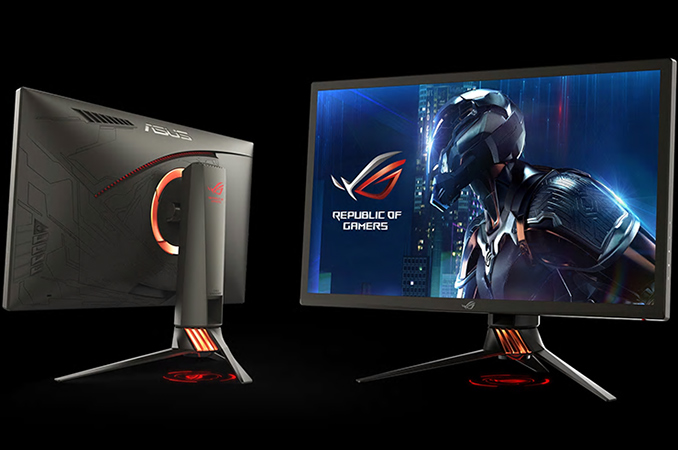

 Quote
Quote
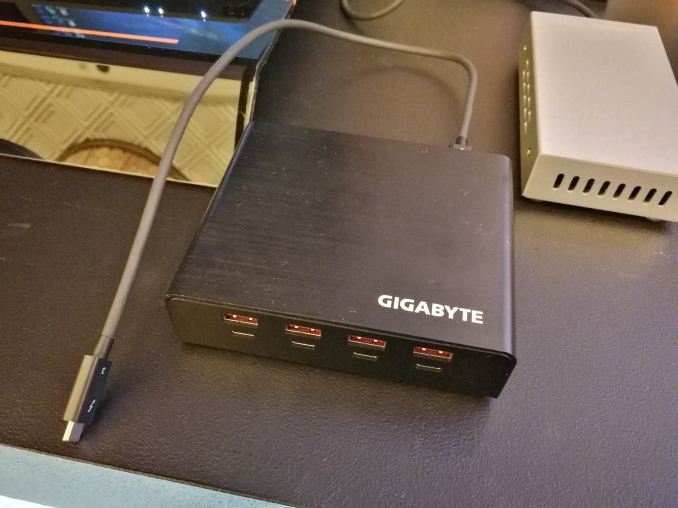






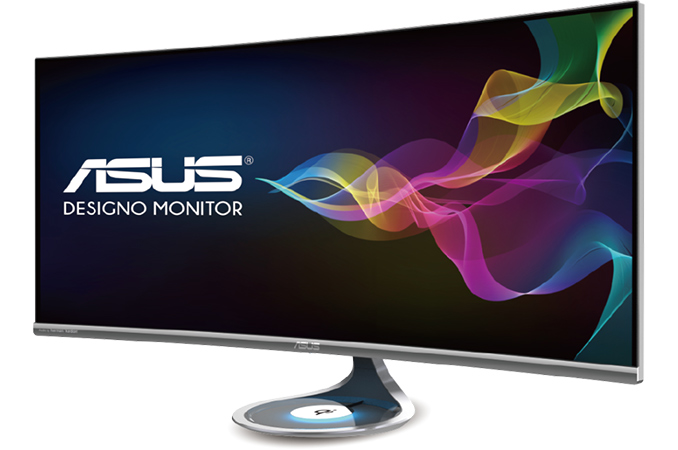

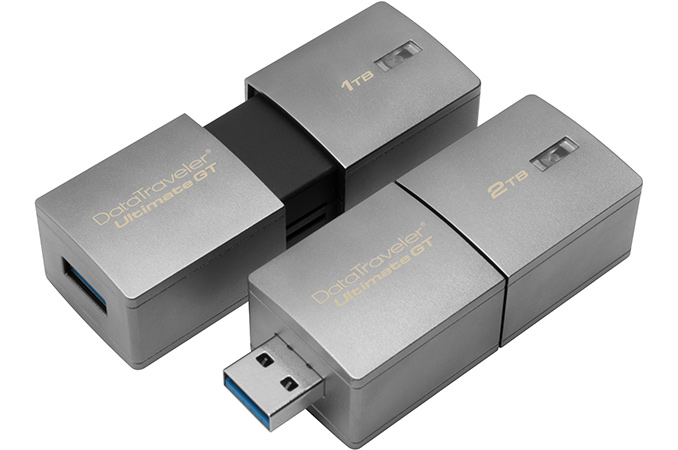
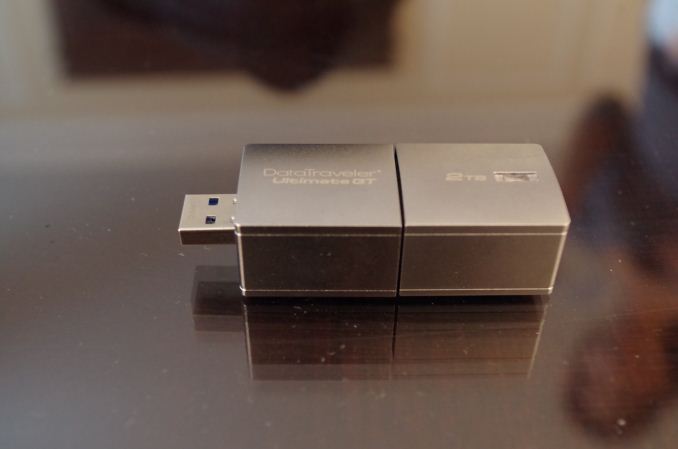
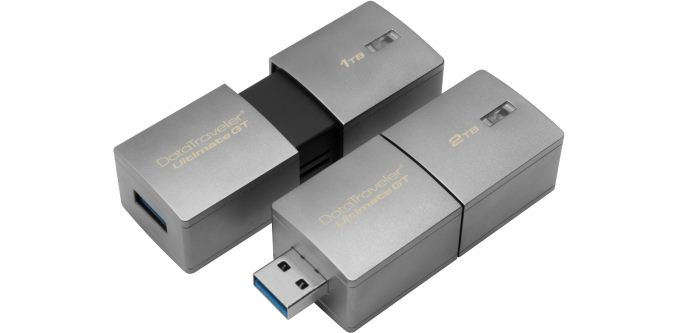

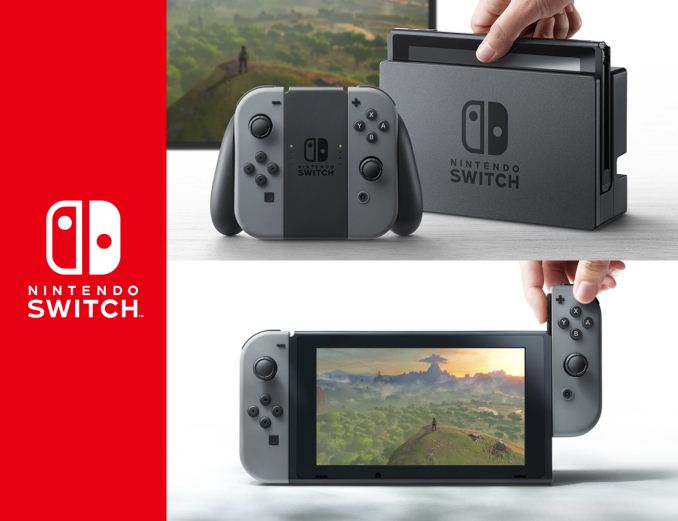
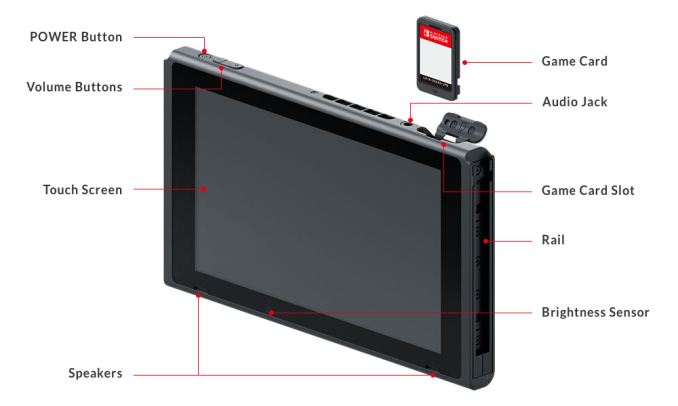

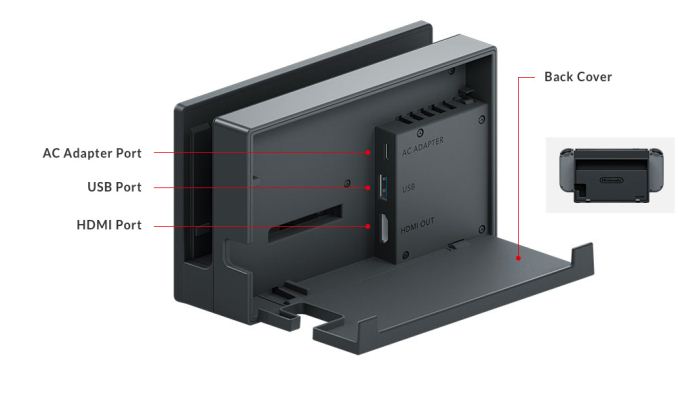
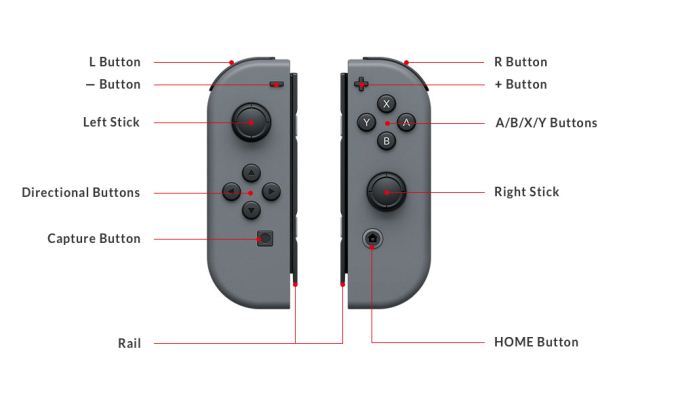
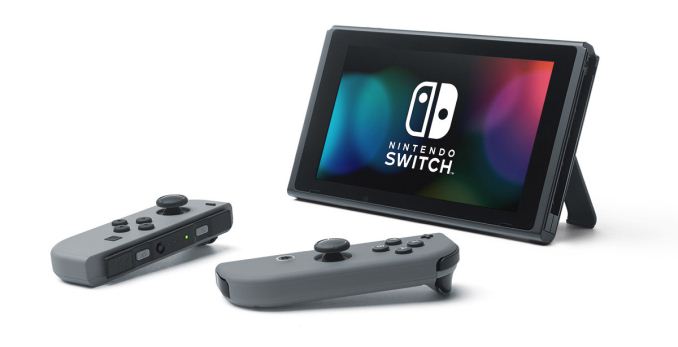
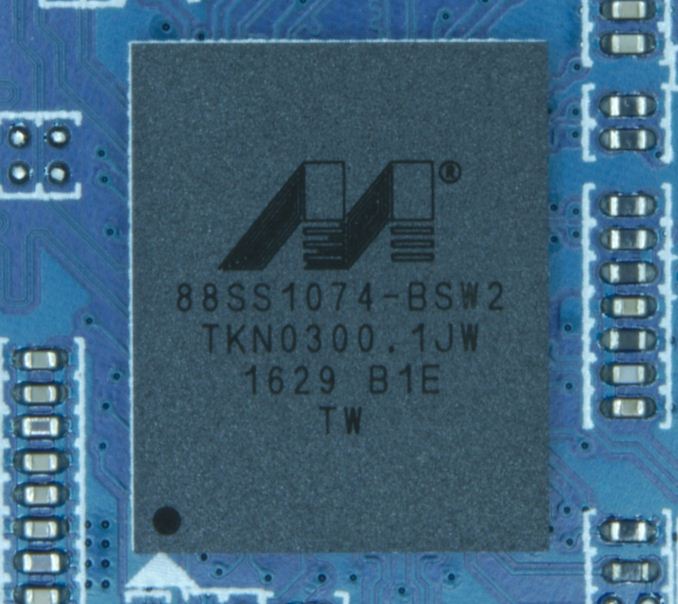



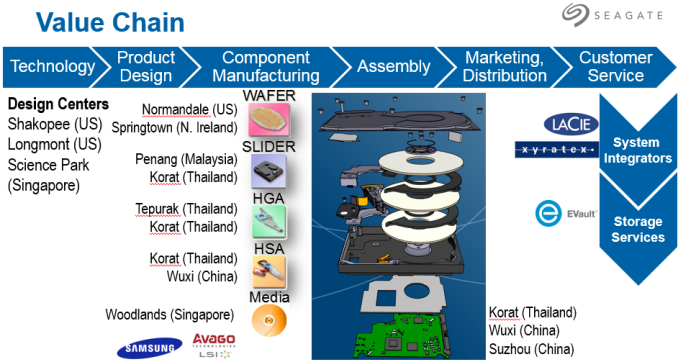


















Bookmarks